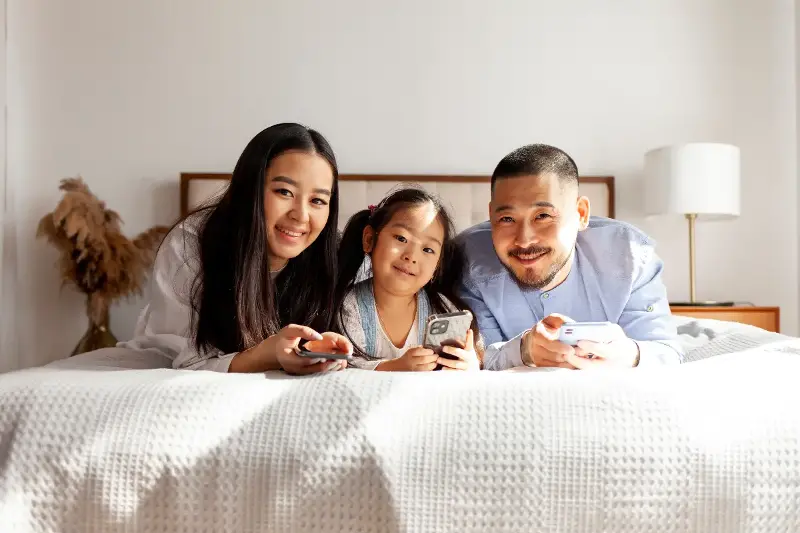In the hustle of modern parenting, few decisions feel as momentous or as anxiety-inducing as the one involving smart device access. The first tap, the inaugural swipe—these moments shimmer with promise yet bristle with parental concern. Should you wait until secondary school, or is there a case for earlier exposure? Navigating this digital rite of passage is no easy feat, but understanding the facts, risks, and benefits will help you chart the right path for your family.

Understanding the Digital Tipping Point: When Curiosity and Readiness Collide
Children’s fascination with screens typically starts early, often before they can even string full sentences together. Tablets aglow with cartoons, smartphones buzzing with messages—the lure is undeniable. But research paints a nuanced picture. According to a 2023 report by Ofcom, the average age UK children receive their first smartphone is 9. Yet, the “right” age varies from family to family, and from child to child. Experts suggest there is no cookie-cutter solution; readiness depends as much on emotional maturity as chronological age.
Consider these key readiness questions:
- Does your child handle their homework and responsibilities without constant reminders?
- Can they manage friendships and social situations in the real world?
- Do they demonstrate impulse control, especially around screen time?
If you’re unsure, observe their interactions—both on and off screens. Sometimes the signs of readiness are subtle, expressed in a willingness to talk through challenges or an ability to walk away from a game when asked.
Benefits and Pitfalls: The Two Sides of the Screen
Introducing a smart device can open up dazzling worlds of creativity, learning, and social connectivity. With just a few taps, children can explore rainforest ecosystems, video call grandparents across continents, or develop coding skills. But the digital promise comes with inherent risks: cyberbullying, overuse, exposure to inappropriate content, and the subtle erosion of attention spans.
Parents often worry about children losing touch with “the real world”, yet, when managed wisely, devices can complement social growth and learning. Consider establishing a family media plan that clearly outlines expectations and boundaries. This approach keeps everyone in sync, punctuating device use with healthy offline activities:
- Outdoor play
- Board game nights
- Shared reading sessions

Age-by-Age Guidelines: A Smart Approach
While no universal age fits all, these age-specific suggestions can offer a compass for decision-making:
- Under 6: Experts generally agree—no personal device. Emphasis should remain on tactile play, direct communication, and slow, sensory learning.
- Ages 6-9: Limited access to shared family devices, with adult supervision. Use at this stage should be brief, purposeful, and content-curated.
- Ages 10-12: This is a common window for first devices, especially as children seek independence. Parental controls and frequent check-ins are key. Open dialogue about screen etiquette and digital footprints can guide safer exploration.
- Ages 13+: By now, many teens manage personal devices. The conversation must shift towards self-regulation and trust. Arm kids with strategies for managing screen time, and make space for regular discussions around cyber safety, compassion, and digital well-being.
Practical Pointers: Setting Healthy Tech Habits Early
Raising digital natives means modelling the behaviours you wish to see. Children quickly detect double standards; if phones rule mealtimes for parents, they’re likely to mirror such habits. To keep device use healthy and joyful:
- Create screen-free zones (the dinner table, bedrooms)
- Build in device downtime—especially before bed
- Prioritise face-to-face social activities
- Use parental controls, but phase them out as trust and capability grow
Most importantly, view smart device use as a partnership—an ongoing dialogue, not a one-off event.

Trust, Vulnerability, And Exploring The Digital Unknown
There’s no single, sparkling moment when a child is suddenly “ready”, nor a perfect playbook for managing the introduction of devices. The journey is inherently personal—a blend of trust, close observation, and yes, an occasional leap of faith. The devices themselves will change over time, but your child’s sense of self, security, and curiosity will be shaped by your willingness to have open, honest conversations about the digital world and all its dazzling possibilities.
So, as you weigh up when to hand over that first smart device, remember: the most important connection is the one you nurture face to face. What will your family’s next leap into the digital unknown look like? Perhaps the answer lies as much in heartfelt dialogue as in any age-specific rulebook.
